SME Finance Policy Guide
SME Finance Policy Guide
SME Finance Policy Guide
Create successful ePaper yourself
Turn your PDF publications into a flip-book with our unique Google optimized e-Paper software.
28 GLOBAL PARTNERSHIP FOR FINANCIAL INCLUSION<br />
• Flat and reasonable fees for registrations and<br />
searches;<br />
• Registrar role limited to management, not to<br />
verify and modify information in the registry<br />
• Non-cash payments (debit/credit cards, electronic<br />
transfers, or pre-paid accounts);<br />
• Clearly defined liability of the registry for errors;<br />
and<br />
• Secured and protected registry data, with established<br />
disaster recovery sites.<br />
• Establishing clear priority schemes for creditors. A clear priority<br />
scheme is key to determine the sequence in<br />
which competing claims to the collateral will be satisfied<br />
when the debtor defaults on one or more of<br />
the claims.<br />
• Improving enforcement mechanisms. Enforcement and collection<br />
of debts upon defaulted loans is a major<br />
impediment for increasing access to credit. Speedy,<br />
effective, and inexpensive enforcement mechanisms<br />
are essential to realizing security interests. Enforcement<br />
is most effective when parties can agree on rights and<br />
remedies upon default, including seizure and sale of<br />
the collateral outside the judicial process.<br />
A collateral regime designed to facilitate increased<br />
access to finance for <strong>SME</strong>s is likely to include:<br />
• A wide range of allowable collaterals (especially<br />
movable collateral);<br />
• The establishment of clear priority schemes for creditors,<br />
clarifying the rights of secured creditors;<br />
• Efficient collateral registries, making priority interests<br />
publicly known; and<br />
• Effective enforcement of collateral in the case of<br />
default (both seizure and disposition).<br />
Challenges and priorities for LDCs<br />
The main challenges that LDCs face are: (i) lack of<br />
appropriate secured lending legal and regulatory<br />
frameworks; (ii) weak institutional capacity to manage<br />
a modern collateral registry system; (iii) limited<br />
knowledge on the importance of having solid secured<br />
Unleashing the Potential of Movable Assets as Collateral:<br />
the Cases of China and Mexico<br />
China - In 2005, China embarked upon a reform of its movable collateral framework to encourage financing against<br />
valuable movable assets. Before the reform, use of movable collateral, especially intangible collateral such as<br />
accounts receivable, under Chinese law was a key constraint for <strong>SME</strong> financing, as bank lending was largely based on<br />
real estate collateral, which <strong>SME</strong>s typically do not possess. The reform model had three phases: development of the<br />
property law; creation of an electronic registry for accounts receivable and leases; and training of lenders to use<br />
movable assets as a basis for lending. Following China’s reform of a movable collateral framework and establishment<br />
of the receivables registry, <strong>SME</strong>s can now use a wider range of assets, such receivables, as a basis for borrowing. In<br />
the three years (2008-2011) of operation of the new system, lenders have granted more than US$ 1.5 trillion in loans<br />
secured with receivables to more than 100,000 businesses, more than half of them <strong>SME</strong>s. The reform of the systems<br />
has also led to the development of the leasing and factoring industries, which have grown substantially over the same<br />
time period.<br />
Mexico - Mexico has progressively introduced reforms in its secured transactions legal system over the past few years.<br />
But the reform that transformed the lending scenario for <strong>SME</strong>s was the creation of a nationwide movable collateral<br />
registry in October 2010. With the new registry, the number of loans to businesses has increased by a factor of four,<br />
to around 23,000 in June of 2011. These 23,000 loans have generated more than US$70 billion in financing to businesses,<br />
<strong>SME</strong>s accounting for more than 90 percent of the firms receiving those loans. The reform has also led to a<br />
cumulative estimated saving for borrowers of US$ 1.3 billion in registration fees associated to the registration of the<br />
security interest in the previous system. About half of the loans granted have gone to agri-businesses and farmers.<br />
Source: G20 Stocktaking Report, 2010; de la Campa, 2010.


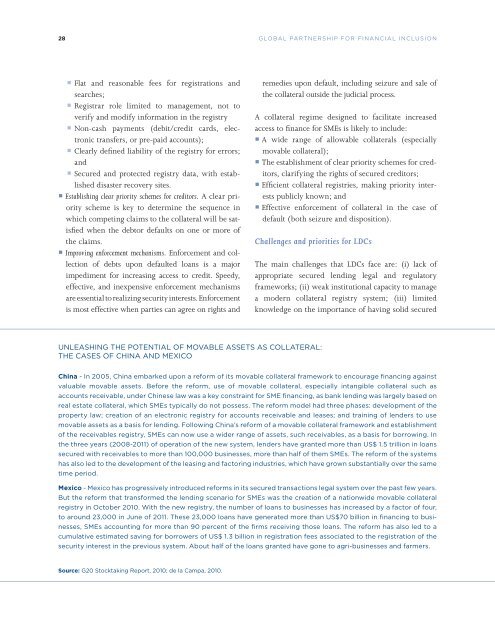
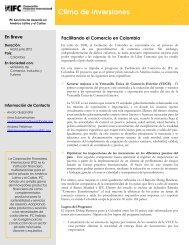
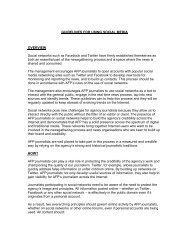
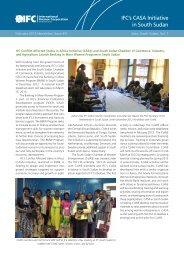

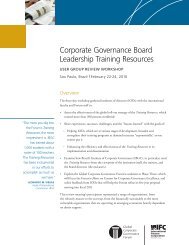




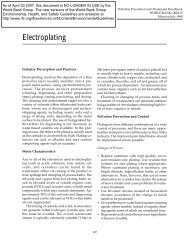

![Print a two-page fact sheet on this project [PDF] - IFC](https://img.yumpu.com/43449799/1/190x245/print-a-two-page-fact-sheet-on-this-project-pdf-ifc.jpg?quality=85)


